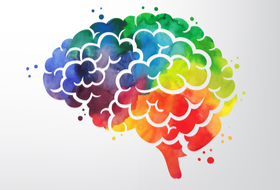Neurodiversity
Page updated: 24/04/2024
Neurodiversity describes the idea that people experience and interact with the world around them in many ways; there is no one "right" way of thinking, learning, and behaving, and differences are not viewed as deficits.
The word neurodiversity refers to the diversity of all people, but it is often used in the context of autism spectrum disorder (ASD), as well as other neurological or developmental conditions such as ADHD or learning disabilities. Learning about this subject is aiming to increase acceptance and inclusion of all people while embracing neurological differences.
Words matter in neurodiversity
Neurodiversity advocates encourage inclusive, non-judgmental language. While many disability advocacy organizations prefer person-first language ("a person with autism," "a person with Down syndrome"), some research has found that most of the autistic community prefers identity-first language ("an autistic person"). Therefore, rather than making assumptions, it is best to ask directly about a person's preferred language, and how they want to be addressed. Knowledge about neurodiversity and respectful language is important to treat people with neurodevelopmental differences fairly.
Keep checking this page for new information.
You can also find more information on the Health & Wellbeing pages.
Learning and Development
Domestic Abuse and Sexual Violence - Learning and Development
New Employees
Welsh Language
Supporting your digital skills
e-Learning
Managing and Working in a Hybrid Team
Corporate Learning Opportunities
- Coaching & Mentoring
- Effective Communication
- Equality & Diversity
- Finance
- Health, Safety & Wellbeing
- Information, Communication & Technology (ICT)
- Leadership and Management
- Personal Effectiveness
- Policies & Procedures
Social Care Wales Workforce Development Programme [SCWWDP]
More from Learning and Development







